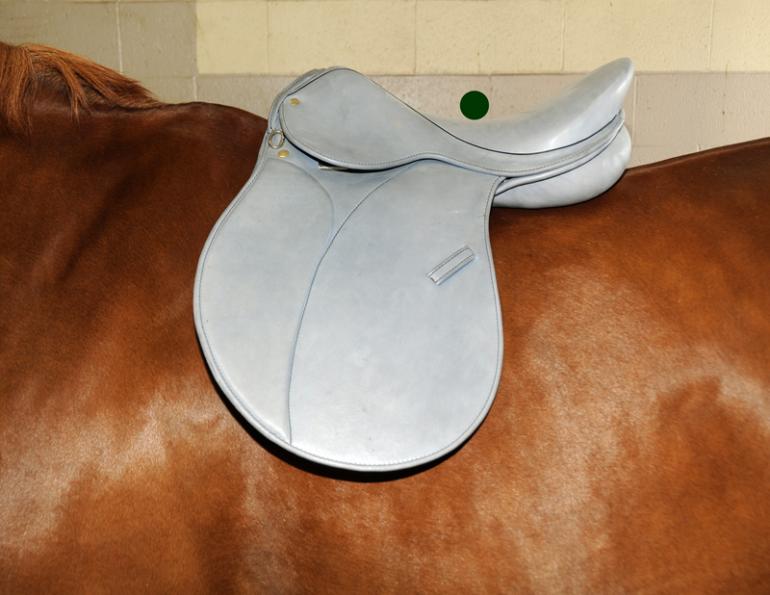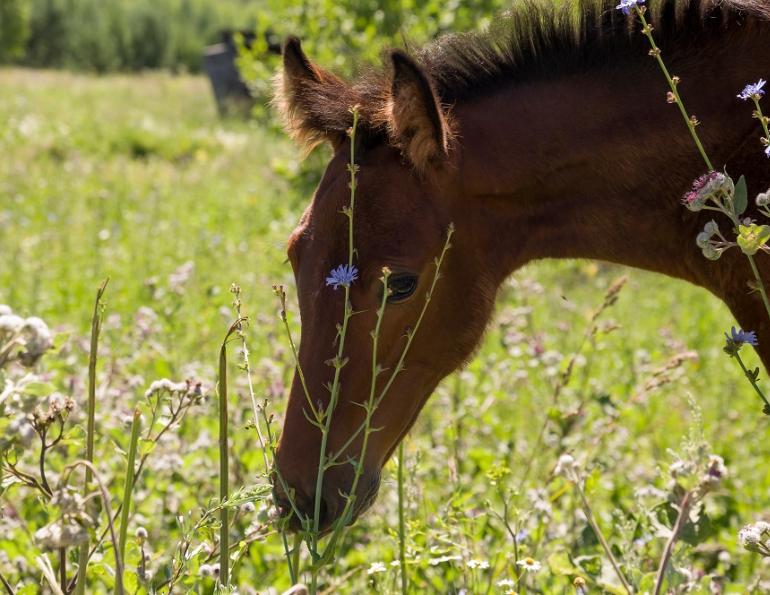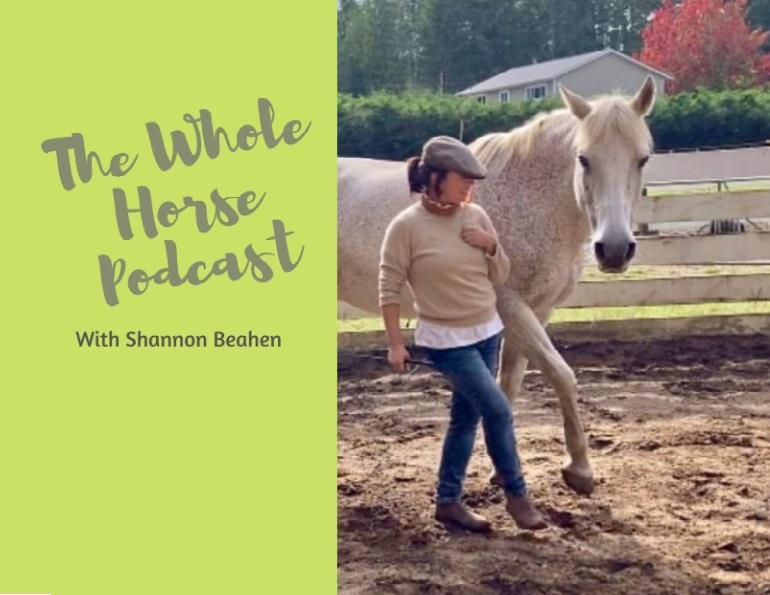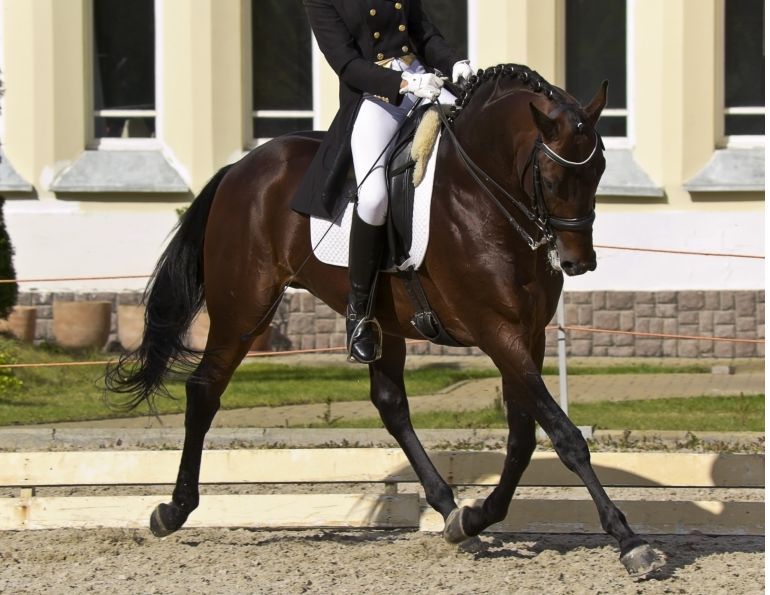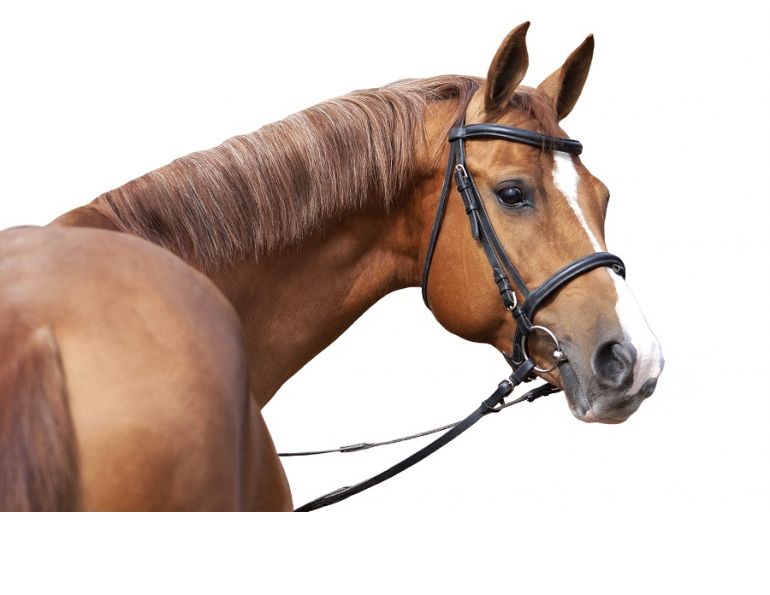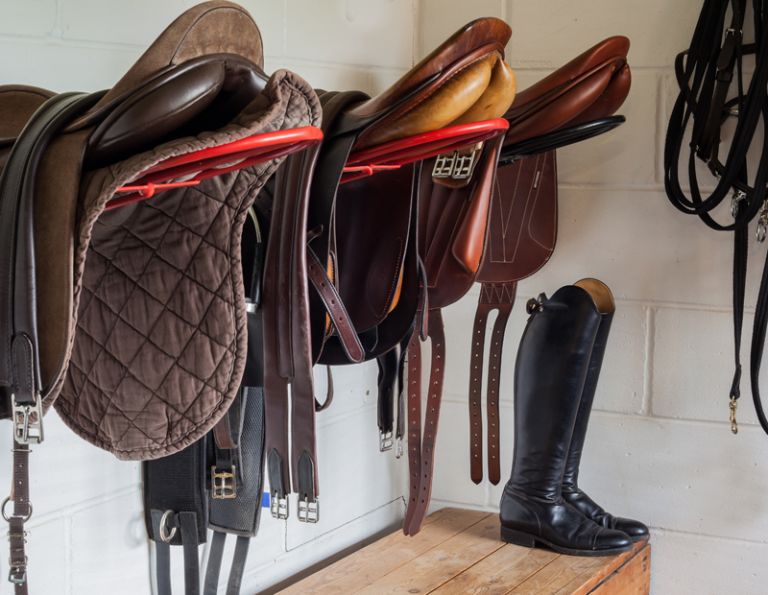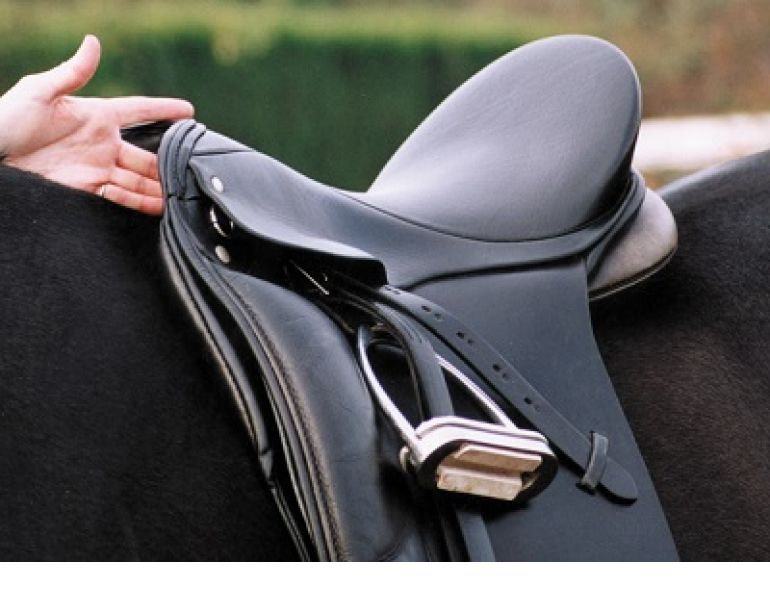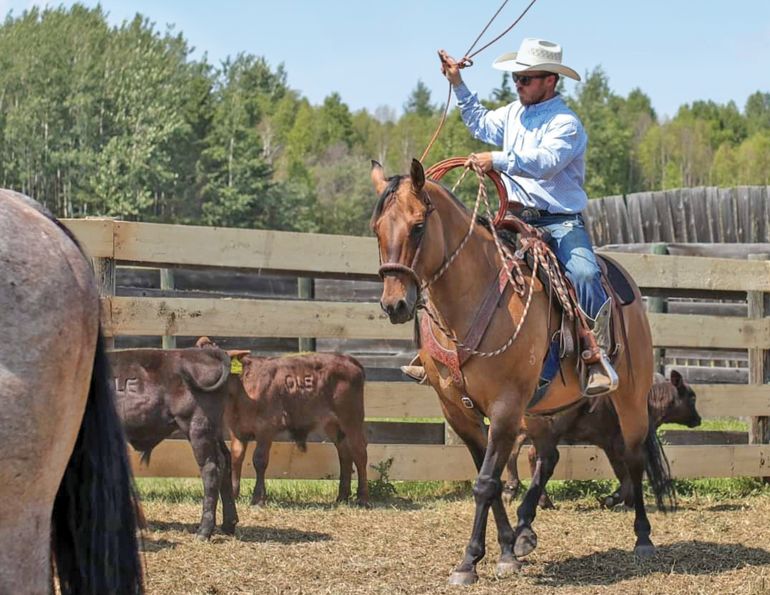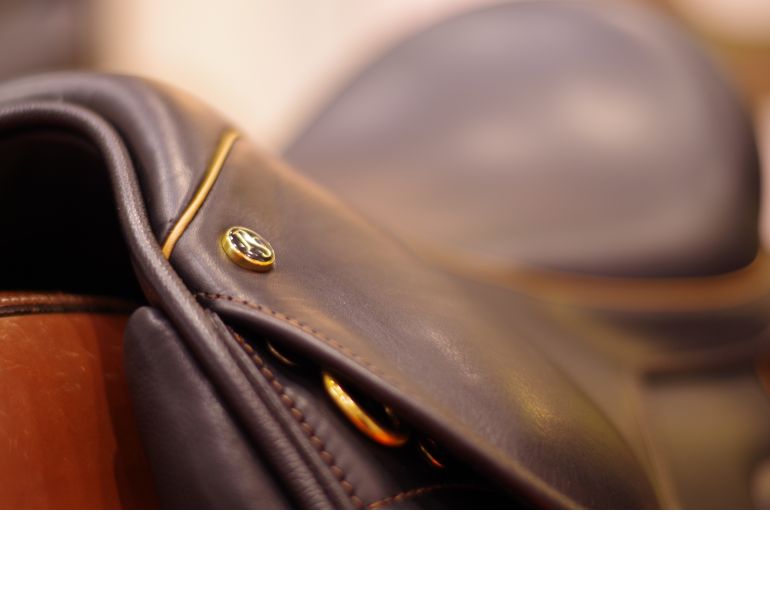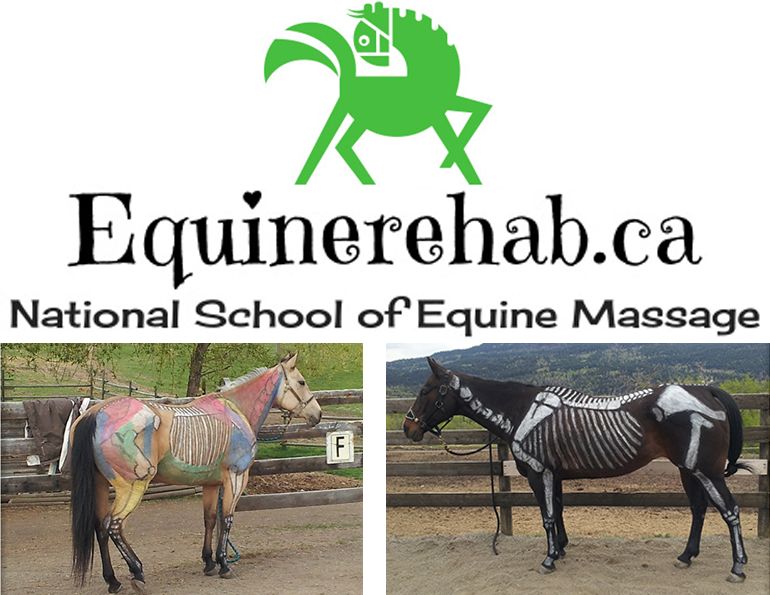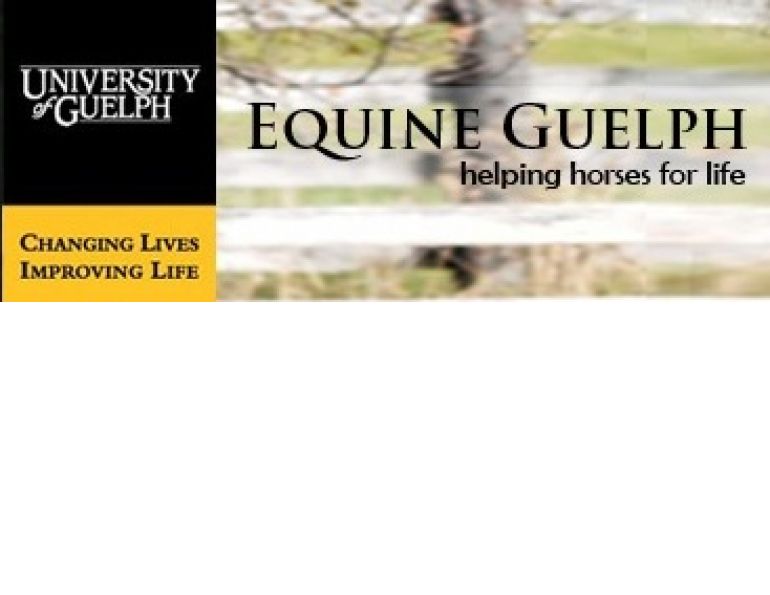By Jochen Schleese, CMS, CEE, CSFT
Saddle fit has become a huge buzzword in the equestrian industry over the last 20 years or so as saddle designs slowly evolve to better accommodate the needs of the horse. Saddle fitting is a truly comprehensive art and science that involves getting the fit right for both parts of the equation – horse and rider. For now, let’s focus on saddle fit for the horse.
The saddle should ideally sit in what is called the saddle support area, with the tree points behind the shoulder and no further back than the 18th thoracic vertebra (last floating rib). The location of the latter is easily determined by noting where the hairlines merge at the flank and following this up to the spine.
When fitting saddle to horse, there are nine points to consider…
#1 Saddle Balance
Generally the symptoms of a saddle that is out of balance will manifest more in what the rider feels than in what a horse does. However, a saddle that is too high in the pommel and too low in the cantle puts a lot of pressure on the horse’s back, making it difficult for him to engage his back because too much of the rider’s weight is on his last two floating ribs.
If your saddle is too low in the front it will pinch into the horse’s shoulder. This is very restrictive for your horse and he may not want to move forward.
NOTE: Saddle balance can also refer to the location of the deepest point of a saddle’s seat.
#2 Withers Clearance
Most riders know that a saddle should have two to three fingers clearance on the top of the withers. But, just as important, there also needs to be clearance on the sides of the withers. When the horse moves, his shoulder blades rotate upward and backward. The saddle must allow enough clearance on the sides of the withers to accommodate the shoulder rotation and allow full and free range of motion.
A horse whose saddle pinches his withers may be reluctant to go forward. The key muscle in this area, the trapezius, is where the mare gets bitten by the stallion during mating and where horses generally assert dominance in altercations. The instinctive reaction is for the submissive horse to stop moving and, in the case of the mare, to drop the back and rotate the pelvis in preparation for mating. If the saddle pinches here, the horse finds himself in a conflicting situation; instinctively he wants to stand still but you as the rider are urging him forward. Reluctance to move forward may not always be a sign of stubbornness or bad behaviour – maybe his saddle hurts.
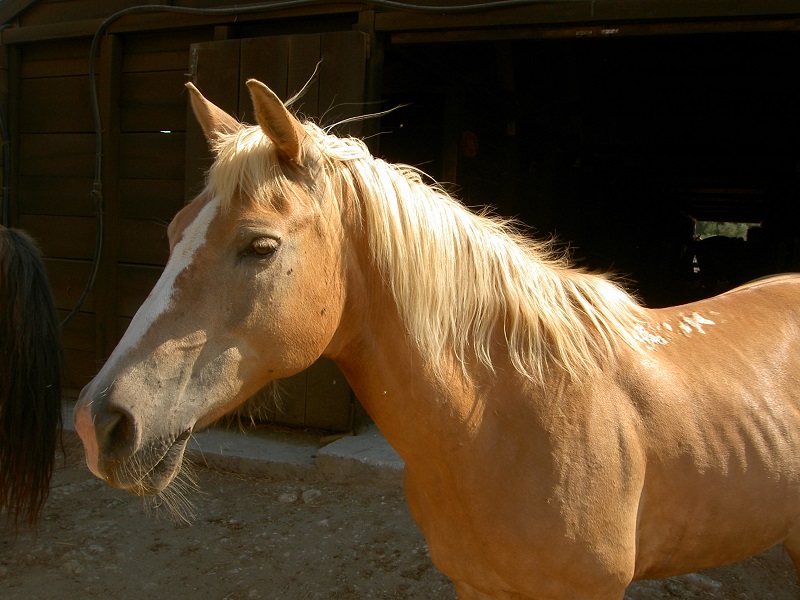
Patches of white hair on the top or sides of the withers can indicate insufficient withers clearance.
Some saddles have panels that flare up at the very back so the last inch or so of the panels don’t contact the horse’s back. This is done in specialized cases, usually to accommodate a tall or large rider on a horse with a short saddle support area. If fitted correctly, this saddle will not rock. The extra room is also important for the back to be able to come up when the horse engages during movement. Other more extreme signs of insufficient withers clearance are patches of white hairs (as opposed to scattered individual white hairs) or sores on the top, or one or both sides, of the withers.
#3 Gullet/Channel Width
There is no “one size fits all” where the gullet or channel of your horse’s saddle is concerned. The width of each horse’s spine will determine how wide the gullet must be. It is very important that the width of the gullet be the same throughout the entire length of the saddle. The horse’s spine and surrounding ligaments do not get narrower over the length of his saddle support area; neither should the gullet of his saddle.
A saddle with a gullet that is too narrow (less than three fingers) will sit on the horse’s spine and/or ligaments. This is especially noticeable when the horse goes around a corner: if the horse is tracking to the left, you will see the saddle shift to the right so that the left side panel rests on the horse’s spine or ligaments. In the short term, this will cause the horse to tighten his back muscles and hollow his back, producing exactly the opposite of the nice, rounded back we want to see. In the long term, it can cause permanent, irreversible, and often career-ending injury or damage to the horse’s back. The most severe forms of such damage are spinal stenosis (compression and narrowing of the spinal canal) and spondylosis (degeneration of the vertebrae).
#4 Full Panel Contact
The saddle should sit on the optimal weight-bearing surface of the horse’s back, distributing the rider’s weight over an area that equals approximately 220 square inches and ends at the last rib.
A saddle that sits flush at the front and back with little contact in the middle (bridging) results in excess pressure on the horse’s back at the front and back. On the other hand, a saddle that is tight in the middle and loose in the front and back (rocking) will place excess pressure in the middle of the saddle where the rider’s entire weight is concentrated.
#5 Billet Alignment
If your saddle slides forward no matter what kind of girth or saddle pad you use, the cause is likely improper billet alignment. The girth will always find its position at the narrowest point of the rib cage behind the horse’s elbow. The billets on a saddle should hang perpendicular to the ground in the girth area. If the billets hang too far back, gravity will pull them forward into the girth area, pulling the entire saddle along with them, with the unfortunate result that the saddle is either driven forward into the horse’s shoulders, or sits on the shoulders.

In addition to two to three fingers clearance on the top of the withers, a saddle must allow enough clearance on the sides of the withers to accommodate the shoulder rotation and allow full and free range of motion. Photo courtesy of Schleese Saddlery
The horse’s shoulder blade (scapula) consists of bone and cartilage. A saddle that is pulled forward onto his shoulders acts like a straitjacket, making him unable to move freely through his shoulders and compromising, sometimes severely, his movement. At worst, a saddle that continually drives into your horse’s shoulders will first produce a buildup of scar tissue on his scapula and eventually the tree points of the saddle could begin to chip away the bone and cartilage – irreversible damage that may lead to career-ending persistent unsoundness.
If the billets hang too far forward, they may make him sore in the elbows, resulting in too much pressure on the panels at the rear of the saddle. Too much of the rider’s weight will be on the horse’s lumbar and kidney area or, in the case of a mare, on her ovaries.
#6 Saddle Straightness
If you have to lean onto one stirrup to center the saddle on your horse’s back while riding, the saddle may not be sitting straight. Straightness means that the center of the saddle is in alignment with the horse’s spine. Sometimes a saddle that appears straight when the horse is standing will shift to the right or left when the horse is being ridden. This can lead to problems with the horse’s sacroiliac (SI) joint. If the saddle shifts to such a degree that the panels rest on the horse’s spine, this can lead to the kind of irreversible long-term damage discussed in Point 3 (gullet/channel width).
A saddle may shift to one side as a result of naturally occurring asymmetry through the horse’s shoulders, which is quite common. The larger, more developed shoulder (usually the left) pushes the saddle over to the other side. Alternatively, the gullet could be too narrow and/or the tree width or angle not correctly adjusted for the horse.
#7 Saddle Length
Does your horse have a four-beat canter? Does he buck or stumble? Does he have tense back muscles which impair movement? If you answered “yes” to any of these questions, you may be facing a saddle length issue. The horse may have difficulty moving forward into the canter, or may be persistently “off” for no readily apparent reason. In extreme cases, bucking is the horse’s attempt to get the weight off the lumbar area.
Even a horse with a back that appears to be of normal length may actually have a very short saddle support area. Breeds that commonly have a short saddle support area include Friesians, baroque type horses (Andalusians, Lusitanos, PREs, and Lippizaners), Arabians, and, more and more frequently, “modern type” Warmbloods. One common saddle fitting issue shared by these breeds is that the panels on dressage saddles are often too long for their backs, impinging on the kidneys or, in mares, the ovaries.
#8 Tree Angle
Trees come in narrow, medium, or wide, but these designations can refer both to the width of the tree and to the angle of the tree points. A saddle that is a “wide narrow” has a wide tree width and a narrow tree point angle.
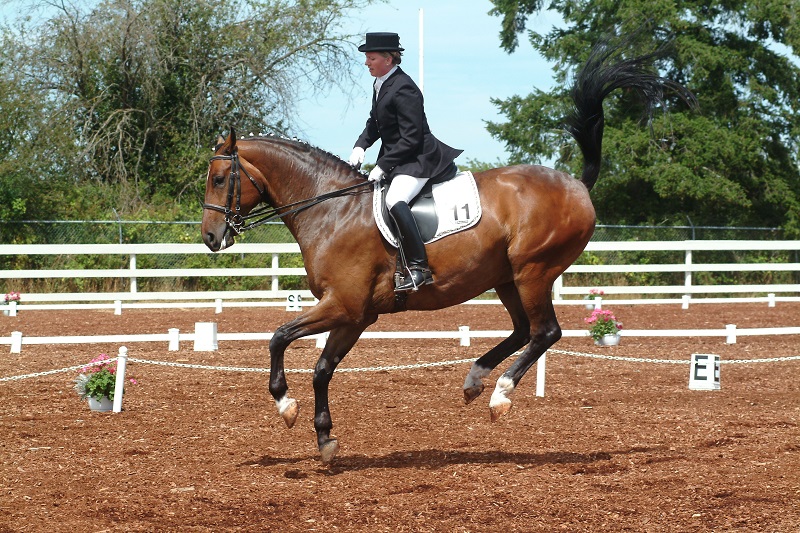
Bucking may not always indicate resistance or bad behaviour. It may be your horse’s way of telling you that the saddle is hurting him. Photo: Robin Duncan Photography
If the width of the saddle’s tree is correct for the horse but the angle is incorrect, the saddle will not fit the horse, and vice versa. Adding or removing flocking from the vertical panels of the saddle will not solve the problem; it is the gullet plate that needs to be adjusted. Some self-adjustable gullet plates will accommodate angle adjustment but will not allow width adjustment (over the withers area).
The angle of the tree needs to be adjusted to match the angle of the horse’s shoulder. Think of two sliding doors. If they are properly aligned, one will slide freely past the other. But if they are not, one will jam into the other. It is the same with your horse’s shoulders and the angle of the tree. If the tree angle does not match the angle of his shoulder, his shoulders will be unable to rotate freely under the saddle, compromising his movement. At the very least a saddle with a tree angle that is not correctly adjusted is extremely uncomfortable for your horse. At worst, it can lead to irreversible long term damage.
If the tree angle is too wide, there may be clearance at the top of your horse’s withers, but the saddle will pinch the sides of his withers and hit the reflex point (cranial nerve 11) that restricts movement in his shoulders and makes him unwilling or unable to move freely forward. The horse will raise his head, hollow his back, or exhibit other forms of resistance until the reflex point nerve becomes numb. In cases where you think, “I have to ride him for a while and warm him up before he’ll listen,” what may really be happening is that the horse is being ridden until he becomes numb to the pain.
#9 Tree Width
The tree width must be wide enough for the horse’s shoulders to rotate freely under the tree. But too often we see a saddle with a tree width that is too narrow for a particular horse. Not only can the horse’s shoulders not move freely under such a saddle, but the saddle can be driven forward on top of his shoulders as he is being ridden which, as we’ve already discussed, can cause serious and permanent damage to the horse. If the tree is too narrow, trying to make the saddle fit by adding more padding is akin to wearing a second pair of socks to make your shoes fit when they’re already too tight – it doesn’t work.
If the tree width is too wide, the entire saddle may rock or slip from side to side during riding, or the back half of the saddle may twist to one side.
For further information and detailed instructions on how to determine for yourself whether your saddle fits your horse, visit www.saddlesforwomen.com.
Main photo courtesy of Schleese Saddlery - In a balanced saddle, the centre of the saddle seat should be parallel to the ground.



